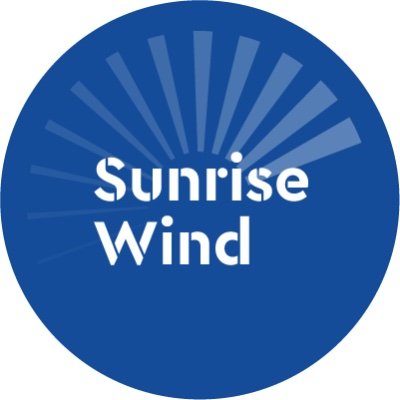AERTC Develops Energy Storage Modeling for Sunrise Wind LLC Offshore Wind Projects
Energy Storage Solutions for Transmission Planning and Grid Stability with Massive Offshore Wind Farms
Principal Investigator: Dr. Yue Zhao
 Sunrise Wind LLC is a New York company formed in December of 2016 as a 50/50 partnership
between Orsted and Eversource to develop offshore wind technology in the Northeast. Orsted is the global leader in offshore wind and was founded in 2006. They have
over 500 employees across the 14 offices located in the United States and over 7,700
people globally. Eversource is New England’s largest energy delivery company with
over 9,200 employees and founded in 1966.
Sunrise Wind LLC is a New York company formed in December of 2016 as a 50/50 partnership
between Orsted and Eversource to develop offshore wind technology in the Northeast. Orsted is the global leader in offshore wind and was founded in 2006. They have
over 500 employees across the 14 offices located in the United States and over 7,700
people globally. Eversource is New England’s largest energy delivery company with
over 9,200 employees and founded in 1966.
Sunrise Wind is developing offshore wind (OSW) projects that will deliver electricity to the power grid. New power transmission infrastructure needs to be designed and built to accommodate the electricity generated. Some aspects of the existing power grid may not support the variable power supply from these OSW projects. Sunrise Wind awarded funds to the AERTC for the development of a design approach for improving grid stability. The AERTC was selected based on the proven ability to successfully organize and facilitate projects that utilize the technical capabilities within Stony Brook University (SBU).
This project addresses two of the most important challenges in OSW energy integration into the regional NYISO Zone K and J, onshore transmission upgrade and grid stability, by developing comprehensive energy storage solutions. Existing studies are based on primitive models as wind energy forecast errors and system contingencies are ignored, whereas real-world utilities power system operations will encounter complex scenarios that potentially require a significantly higher need for transmission capability upgrades.
This project focused on development of a model and resulting analysis for optimal energy storage (e.g., battery storage) placement, sizing, and operation strategies under realistic power system operations that include large scale, variable OSW energy. It included an economic evaluation of the storage in reducing the need for transmission upgrade and reducing/eliminating the need for curtailment of the energy output from the wind turbines. Methods included the use of fast control of energy storage, inverters, and OSW wind turbines for stabilizing the voltage and frequency of the onshore grid in the presence of wind fluctuations and system contingencies.
The project deliverables as defined in the Statement of Work (SOW) included a comprehensive and configurable simulator of the multi-settlement operation and fast control of the New York Independent System Operator (NYISO) Zone K and J grid with detailed models of energy storage and flexible levels of OSW integration and coordinative storage operation algorithms for absorbing OSW forecasting errors and system shocks due to contingencies. It also included distributed fast control algorithms of storage, inverter and OSW for stabilizing grid against wind fluctuations and system contingencies. In addition, comprehensive and numerically proven suggestions of energy storage locations and sizing in Zone K and J, including analysis of the value of storage deployment in reducing the need of onshore transmission upgrade for integrating massive OSW, reducing OSW curtailment, and improving the reliability and stability of the grid.
 The final report was issued September 26th, 2023 including a conference call where Professor Yue Zhao and the AERTC team provided
an overview of the results. Key factors were included in the assessment, such as
capex, opex, battery life and charge/discharge cycles. An accurate cost-benefit analysis
of energy storage co-located with OSW was presented.
The final report was issued September 26th, 2023 including a conference call where Professor Yue Zhao and the AERTC team provided
an overview of the results. Key factors were included in the assessment, such as
capex, opex, battery life and charge/discharge cycles. An accurate cost-benefit analysis
of energy storage co-located with OSW was presented.
Two different solution algorithms for battery charging/discharging with OSW were considered in this project. The first was an optimization-based algorithm for Stochastic Model Predictive Control (MPC) based on Scenario Generation. The second was a Reinforcement-Learning (RL) based Algorithm.
The benefit was calculated in terms of Internal Rate of Return (IRR) where both algorithms showed a sharp peak at the two (2) hour battery storage duration and a maximum of approximately 6% IRR. Battery life was evaluated under several different scenarios, with a 25–30-year life shown to be consistent with the maximum economic value.
In summary this project resulted in the development of highly faithful modeling of energy storage characteristics, realistic modeling of OSW + storage participating in multiple NYISO markets, highly advanced and novel algorithm design for OSW + storage decision making. This produced extensive simulations based on real-world data and a comprehensive economic cost-benefit analysis that can be used for decision making by the industrial sponsor.
